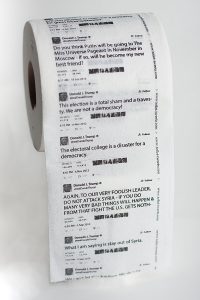Plaintiff sued defendant claiming that defendant wrongfully scraped sales listings from plaintiff’s website and copied those listings on defendant’s own website. It brought the following claims:
- Violation of the Copyright Act’s prohibitions against distributing false copyright management information (“CMI”) (17 U.S.C. §1202(a)), and removing or altering CMI (Id., §1202(b)); and
- Violation of the Lanham Act for reverse passing off and false endorsement.
Defendant moved to dismiss for failure to state a claim upon which relief could be granted. The court granted the motion.
CMI claim
The court dismissed the claim asserting distribution of false CMI because plaintiff alleged that the false CMI was a blanket copyright notice found on defendant’s website’s terms of use, and not on the pages where the copied content was displayed.
It also dismissed plaintiff’s claim for removal of CMI because it found that the allegations concerning the CMI allegedly removed – a copyright notice found at the bottom of the pages of plaintiff’s website – covered the pages of the website itself, not the particular listings that were allegedly copied without the CMI. It held that:
To violate the DMCA, the false CMI must be “conveyed in connection” with the work. General copyright notices are not “conveyed” with the work, and thus do not violate the DMCA. [See GC2 Inc. v. Int’l Game Tech. PLC, 255 F. Supp. 3d 812, 821 (N.D. Ill. 2017)] (“Courts, however, have generally required more than a boilerplate terms of use notice near a copyrighted work in order to find a party liable for distributing false CMI”); Pers. Keepsakes, Inc. v. Personalizationmall.com, Inc., 2012 WL 414803, at *7 (N.D. Ill. Feb. 8, 2012) (“[A]s a matter of law, if a general copyright notice appears on an entirely different webpage than the work at issue, then that CMI is not ‘conveyed’ with the work and no claim will lie under the DMCA.”)
Lanham Act claim
On the Lanham Act claim, the court found that plaintiff failed to allege that it had a protectible mark that was being used in a manner that was likely to cause confusion among consumers.
The court also applied the 2003 Supreme Court case of Dastar Corp. v. Twentieth Century Fox Film Corp., 539 U.S. 23 (2003) to find that plaintiff’s Lanham Act claim failed. In Dastar, the Supreme Court concluded that “false designation of origin” as it is used in the Lanham Act attaches to the producer of tangible goods that are offered for sale, and not to the author of any idea, concept, or communication embodied in those goods. In this case, the defendant created the final product (website listings), albeit using the plaintiff’s content (just like in Dastar). Because plaintiff was not the source of the product (the duplicated listings), it did not have a claim under the Lanham Act.
Alan Ross Machinery Corp. v. Machinio Corporation, 2018 WL 6018603 (N.D.Ill. November 16, 2018)



